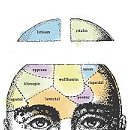Rates of adverse outcomes, including premature death and violent crime, have increased among people with schizophrenia and related diagnoses since the 1970s when compared to the general population. This is according to research published in Volume 1, Issue 1 of Lancet Psychiatry by the University of Oxford and the Karolinska Institute. The study looks at the total population of 24,297 people diagnosed with schizophrenia in Sweden between 1972 and 2009. The researchers compared, for the first time, adverse outcomes in both people with a diagnosis of schizophrenia and the general population, as well as unaffected siblings, allowing them to account for factors which might affect the risk of suicide or violent behavior.
Fazel, S., Wolf, A., Palm, C., Lichtenstein, P.; Violent crime, suicide, and premature mortality in patients with schizophrenia and related disorders: a 38-year total population study in Sweden. Lancet Psychiatry. Vol. 1, Issue 1, Pages 44-54, June 2014. doi:10.1016/S2215-0366(14)70223-8
Increasing rates of premature death, conviction for a violent crime in people with schizophrenia since 1970s, study shows (Science Daily)












As Robert Whitaker notes in his book Mad in America, antipsychotics are no longer “clean” drugs. The early antispychotics targeted specific dopamine pathways. Now, however, the atypical antispychotics target other pathways as well — such as serotonin, glutamate, etc. Which means that they are not only antipsychotics, but antidepressants as well.
Antidepressants have been shown to lead, for some people, to an increase in violence and psychotic experiences. Having had experience with this class of drugs myself, I can tell you that at least one of them leads to an increase in aggressive feelings and confrontational behaviors.
I would not be in any way surprised to learn that the newer atypical antipsychotics are leading to an increase in violent behavior on the part of what is otherwise a very peaceful population.
Report comment
That’s a very interesting theory. I didn’t know that about the atypicals. I had just assumed that they were “better” because they were more expensive.
Report comment
This article is not very helpful in that it suggests that there is a link between rising rates of violence and lower rates of in patient hospitalization. Many readers, unaware growing evidence linking violence to anti psychotic drug use will use this study as a justification for greater institutionalization of people diagnosed with a psychotic disorder, not a call for reduction of medication usage.
Report comment
Of course. I always find it funny that they examine the influence of illicit drug use but forget to mention the psych drugs.
Report comment
There are not enough beds available to incarcerate the booming population of those deemed seriously mentally ill. I think the bigger threat is increased outpatient commitment and the best defence against that is to feign a compliant attitude convincingly enough to be rewarded oral as opposed to injected medication. At that point, the ball is in your court.
Report comment
Well, I wonder why that is, can’t quite figure it out…I wonder how it’d look like if you plotted the psychiatric drug use on figure 2…
Report comment
“We did not investigate modification of risk factors through treatment because these data have recently become available and solely for medication.” – here you go.
If you see a rising trend then maybe a valid question is – what is also rising and I think I may have an answer to that. It’s funny how few studies even dare to ask the question of how the drug treatment affects these stats in any meaningful way, especially in the long-term.
Report comment
It seems the obvious missing factor here is that we have more people being treated for these “disorders” and yet the rate of violence, suicide and early death have increased. If these “treatments” were effective, wouldn’t we expect to see the reverse effect? They do call for “improved treatments,” but don’t seem to acknowledge the rather obvious conclusion that the current “treatments” aren’t working very well, at least for a big proportion of the population they’re looking at. It seems like folks were better off before they got these modern “treatments.”
Important to note also that the correlation was not with frequency of hospitalization, but with length of stay in the hospital. People who are hospitalized are spending less time there, and in my view, this is largely because we’re relying almost solely on drug treatment to “stablilize” and release folks before anyone really has a chance to find out what is going on. And now no one even really bothers to ask most of the time – causes are irrelevant, life stressors are irrelevant, it’s all about messing with brain chemistry.
The further we move into the purely mechanical view of “mental illness,” the poorer our outcomes become. It is a shame, though predictable, that the authors aren’t able to make the leap to see that poorer outcomes mean that the current treatment modality is not working.
—- Steve
Report comment
http://www.madinamerica.com/2012/08/neuroleptic-drugs-and-violence/
Report comment